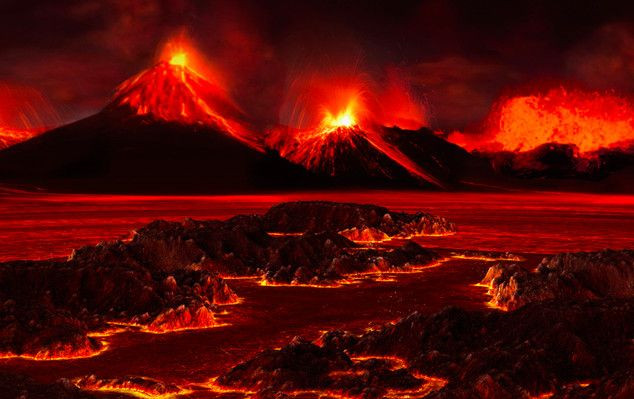Permian Mass Extinction Took 60,000 Years, Siberian Traps May Have Triggered ‘Really Rapid’ Wipeout

The mass extinction that wiped out the majority of marine and land species on Earth took less time than previously thought.
Known as the end-Permian extinction, the largest mass extinction in the history of animal life took place around 252 million years ago. The findings, published in the Proceedings of the National Academy of Sciences, explains how more than 96 percent of marine species and 70 percent of land animals were eradicated in just 60,000 years -- a time period 10 times shorter than expected.
"We've got the extinction nailed in absolute time and duration," Sam Bowring, the Robert R. Shrock Professor of Earth and Planetary Sciences at Massachusetts Institute of Technology, said in a statement. "How do you kill 96 percent of everything that lived in the oceans in tens of thousands of years? It could be that an exceptional extinction requires an exceptional explanation."
While the exact cause behind the mass extinction is still under debate -- with some pointing to an asteroid impact, massive volcanic eruptions, or a cataclysmic cascade of environmental events -- the new finding offers some clues on what could have caused the mass extinction.
For instance, the research team discovered that 10,000 years before the die-off, the ocean experienced a pulse of light carbon that most likely led to a spike of carbon dioxide in the atmosphere. This could have led to ocean acidification, warmer water temperatures that effectively killed marine life.
"Whatever caused the extinction was really rapid, or the biosphere reached some critical threshold," graduate student Seth Burgess, and a colleague from the Nanjing Institute of Geology and Paleontology and lead author of the paper, told LiveScience. "Having an accurate timeline for the events surrounding the mass extinction and the interval itself is extremely important, because it gives us an idea of how the biosphere responds."
Researchers came to their conclusion after analyzing rock samples taken from formations in Meishan, China, an area believed to hold clues on the Permian mass extinction. The samples were pulverized to isolate tiny zircon crystals containing a mix of uranium and lead. Once both were isolated, researchers measured the ratios of both isotopes to pinpoint a timeframe.
The new timeline suggests the mass extinction may have been caused by massive volcanic eruptions from the Siberian Traps -- the largest known, most-intense eruptions in the history of the Earth -- that released carbon dioxide into the air and ocean. To prove whether this is the case, researchers plan to make a timeline of the Siberian Traps eruptions to see if the two events overlapped.
"We've refined our approach, and now we have higher accuracy and precision," Bowring said. "You can think of it as slowly spiraling in toward the truth."
© Copyright IBTimes 2024. All rights reserved.












